Toyota RAV4 Vs Honda CR-V: Which Crossover Is Right For You?

Think compact crossover and the Honda CR-V and Toyota RAV4 will likely be the first two images to pop in your head.
We can’t blame you, as it’s the same with us. Rivals since the ’90s, both these crossovers have fought tooth and nail and carved out their own niches and fan bases. Both offer similar packages, but with a few choice differences.
Get a Quote on a New Toyota RAV$ or Honda CR-VSo if you’re in the market for a Japanese compact crossover, there is a good chance that you are torn between the Honda CR-V and the Toyota RAV4, we are here to make choosing between them a little easier. We have also not included the RAV4 Prime as an equivalent plug-in hybrid doesn’t exist in Honda’s portfolio, yet.
Cabin Space
RAV4: Thanks to a 105.9-inch wheelbase, front occupants can enjoy 41.0 inches of legroom while the rear bench offers 37.8 inches (960 mm) of legroom. At 37.7 inches (958 mm), the headroom in the front is just about adequate. But in the rear, you get 39.5 inches (1,003 mm) of it. The moonroof tends to eat into the headroom in the front but the height-adjustable driver’s perch ensures even the taller passengers are well accommodated.
You can seat three adults in the rear bench thanks to the 56.4 inches (1,432 mm) of shoulder width. But it’s only comfortable to seat three during short runs and city stints.
CR-V: Despite being a little over an inch longer at 182.1 inches (4,625 mm), the CR-V has a 104.8-inch (2,662 mm) wheelbase compared to 105.9 inches (2,690 mm) on the RAV4. Despite this, it manages to offer 40.3 inches (1,024 mm) of rear legroom and 40.1 inches (1,018 mm) at the front. The front offers 40.1 inches (1,081 mm) of headroom while at the rear you get 39.1 inches(993 mm) of it.
Bottom Line: Despite the shorter wheelbase, the CR-V offers 2.5 inches (63.5 mm) of extra legroom in the rear. In addition, despite being shorter and narrower, the Honda manages to offer more headroom in the front and almost identical levels of shoulder width, so it’s the easy winner here.
Cargo Space and Towing
RAV4: With the rear bench up, the Toyota can swallow up to 37.6 cu-ft (1,064 liters) of luggage. Fold the seat down however, you can squeeze in 69.8 cu-ft (1,976 liters) of luggage in the back. As for the towing capacity, the gas engines can tow up to 1,500 lb while the hybrid powertrain can haul 1,750 lb.
SEE ALSO: 2020 Toyota RAV4 TRD Off-Road ReviewCR-V: The CR-V can accommodate 39.2 cu-ft (1,109 liters) of luggage behind the rear bench and with the bench down, the capacity increases to 75.8 cu-ft.(2,145 liters) In the hybrid however, the cargo capacity reduces to 33.2 (939 liters) and 68.7 cu-ft. (1,944 liters) respectively. Gas-powered towing capacity is the same 1,500 lb as the RAV4; Honda doesn’t quote a Hybrid amount.
Bottom Line: The Honda offers more cargo space than the RAV4 and the capacity is only marginally reduced in the hybrid versions. The CR-V wins this one too.
Tech and Features
RAV4: Most of the lineup makes do with the 7.0-inch touchscreen as standard. Though the 8.0-inch system is available as part of an optional package XLE trim onwards, it’s not until you opt for the Adventure, TRD, or Limited trims that you get the 8.0-inch system as standard.
LED headlamps are part of the standard kit but auto-leveling is available XLE onwards. Heated wing mirrors and blind-spot indicators are also standard and so is climate control, albeit with a single zone. XLE trim is required for the dual-zone upgrade. The Canadian market does get the dual-zone system as standard, however. Only the top trims get a tri-zone system.
A 4.2-inch MID screen is standard with the analog setup on the base trims. The 7.0-inch digi-analog setup is available on the XSE and Limited trims only—the former trim is hybrid-only. Strangely, only the driver’s perch gets power adjustment regardless of the trim you choose. Built-in navigation and an 11-speaker JBL sound system is only available as standard on the Limited trim. It is also available on lower trims as part of an optional package for $1,620.
CR-V: A 5.0-inch touchscreen infotainment system is part of the standard kit in the CR-V. It comes with Android Auto and Apple CarPlay as standard but is available in the base trim only. EX trim onwards you get the 7.0-inch system. In-built navigation, a premium sound system and the wireless phone charger are all available in the top Touring trim only. In addition, only the hybrids and the Touring trim get LED headlamps while the rest of the lineup makes do with halogen lamps.
SEE ALSO: 2020 Honda CR-V Hybrid First Drive ReviewA single-zone climate control system is standard on the base while the rest of the trims get a dual-zone system. The CR-V however does offer its all-digital instrument cluster as standard across the lineup. Also, most add-on packages add accessories and aesthetic elements only. There is also no panoramic moonroof on offer with the CR-V.
Bottom Line: Though a lot of the goodies might not be standard and most are reserved for the top trims only, the RAV4 does offer a lot more equipment than the CR-V like standard LED headlamps, a larger infotainment screen, and a panoramic moonroof.
Powertrains
RAV4: Both gas and hybrid powertrains are a part of the RAV4 lineup. Both use the same basic engine as their base as well. The gas version employs a 2.5-liter four-cylinder naturally-aspirated engine making 203 hp and 189 lb-ft of peak torque. It pairs with an eight-speed automatic gearbox which primarily drives the front wheels. An on-demand AWD system is available on all trims.
The hybrid system on the other hand makes 219 hp combined hp from an Atkinson-cycle 2.5-liter four-pot and the battery system. The torque output is higher as well. In addition, the hybrid trims come with AWD only.
CR-V: Just like the RAV4, the CR-V comes with both gas and hybrid engines too. The 1.5-liter turbocharged four-pot makes 190 hp and 179 lb-ft of peak torque. A 2.0-liter naturally aspirated unit pairs with a hybrid setup to deliver 212 hp and 232 lb-ft of torque.
Both engines come with a CVT gearbox and while the gas engine is available with both FWD and AWD, the hybrid only comes with the latter.
Bottom Line: While both offer gas and hybrid engines, the RAV4’s engine lineup has a higher output and hence is the winner in this category.
Fuel Economy
RAV4: Different trims on the RAV4 lineup return different mileage but according to the EPA all hybrids return 41 mpg city and 38 mpg highway, while the overall figure stands at 40 mpg. The FWD trims return between 25 and 27 mpg in the city and between 33 and 35 mpg on the highway. Mileage drops by 1 mpg for most AWD trims. the AWD-only TRD and Adventure return 25 mpg in the city and 32 and 33 mpg out on the highway, respectively.
CR-V: Gas FWD and AWD fuel economy figures for the CR-V are almost identical to that of the RAV4. FWD versions perform a little better in the city while on the highway they are slightly less efficient. The AWD versions manage 27 mpg in the city, and 32 mpg on the highway. The overall figure stands at 29 mpg. The hybrid though, is less efficient overall; it returns 40 mpg in the city and 35 mpg on the highway according to the EPA.
Bottom Line: While the gas powertrains are pretty evenly matched, RAV4 manages to edge ahead here thanks to a more efficient hybrid powertrain.
Safety
RAV4: The Safety Sense 2.0 package is part of the standard kit across the range. Standard assistance systems include pre-collision warning with pedestrian detection, radar-guided cruise control and lane departure alert with steering assist to name a few. Blind-spot monitoring with rear cross-traffic alert however is optional on the base LE trim but standard XLE trim onwards.
CR-V: Auto high-beam, lane-keeping assist and adaptive cruise control are all standard on the Honda CR-V. Blind-spot detection with rear cross-traffic alert though is only available EX trim onwards.
Bottom Line: While the blind-spot detection is available as part of a package on the RAV4, the CR-V only offers it as standard EX trim onwards, no exceptions. Hence, the Toyota wins this one.
Styling
RAV4: In the styling department, the RAV4 is certainly the edgier offering. The trapezoidal grille coupled with the angular headlamps and a gaping front bumper give it an aggressive look. Then there are the squared off wheel arches and the high-set tail lamps and the rear window which give it a sportier stance compared to the CR-V. The overall design also makes the RAV4 appear a tad wider than it actually is.
CR-V: The Honda CR-V sports a much more sedate and friendlier design compared to its rival. Where the RAV4 is edgier, the Honda is more rounded off. Though it features high-set tail lamps and rear windscreen, the two are quite distinct from each other.
Bottom Line: Beauty, eyes and beholder, something like that.
Pricing
RAV4: The base LE trim starts from $27,325 (including destination). LED lamps come as standard but inside it’s mostly hard plastic and cloth upholstery and the smaller 7.0-inch touchscreen unit. Apple CarPlay and Android Auto are standard. Moving up, you have the XLE and XLE Premium trims starting from $28,620 and $31,325, respectively. The Adventure ($34,430) and TRD ($37,055) trims however are only available with the gasoline engine. They’re also only available with AWD; adding it to other trims will set you back by a further $1,400. Opting for a hybrid, which is also AWD-only, adds $1,100.
The XSE trim is available as a hybrid only and starts from $35,775. At the top of the RAV4 lineup sits the Limited trim which starts from $35,855. While navigation and the JBL system are standard on the Limited, the panoramic moonroof is only available as an option and on the Limited and XSE trims only.
CR-V: CR-V Prices start from $26,525 (including destination) for the base LX trim. You get a 5.0-inch infotainment screen and a single zone climate control system. Android Auto and Apple CarPlay along with the digital instrument cluster though are standard. Moving up to the EX ($29,035) gets you the 7.0-inch system and heated wing mirrors and front seats.
For leather-trimmed seats and powered tailgate you will need to upgrade to the EX-L which starts from $31,625. An Auto-dimming rearview mirror and HomeLink Remote also become available with the EX-L trim. The Touring sits at the top of the lineup and starts from $34,825. This comes with all the bells and whistles including wireless charging, hands-free tailgate access, ambient lighting, and more.
All gas trims come with FWD and AWD. The upgrade to AWD adds $1,500 to the total cost, while the hybrid—available only with AWD—adds a further $1,200. The base LX trim however, is not available as a hybrid. The Touring Hybrid sits at the very top of the trim lineup retailing at $37,525.
Bottom Line: The RAV4 can overwhelm the customer with the sheer number of trims it offers. Then there are the optional packages which can add to the confusion—but also variety of choice. Though most CR-V trims undercut the RAV4, the cost to upgrade to AWD and hybrid is lower on the Toyota. Add to that the sheer number of trims to choose from and the RAV4 takes this category with ease.
In Conclusion
Both crossovers are almost evenly matched. Where the CR-V offers more cabin space and a lower price point, the RAV4 offers better standard and optional equipment. Having driven both, we can also confidently state that the CR-V is a better drive compared to the Toyota. But the RAV4 is also more efficient and has a something-for-everyone approach that makes it impossible to ignore and the winner of this spec comparison.
Become an AutoGuide insider. Get the latest from the automotive world first by subscribing to our newsletter here.

More by Kshitij Sharma




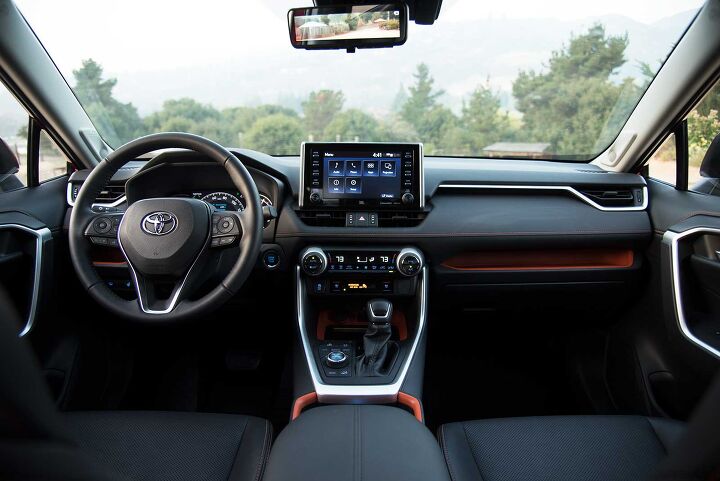
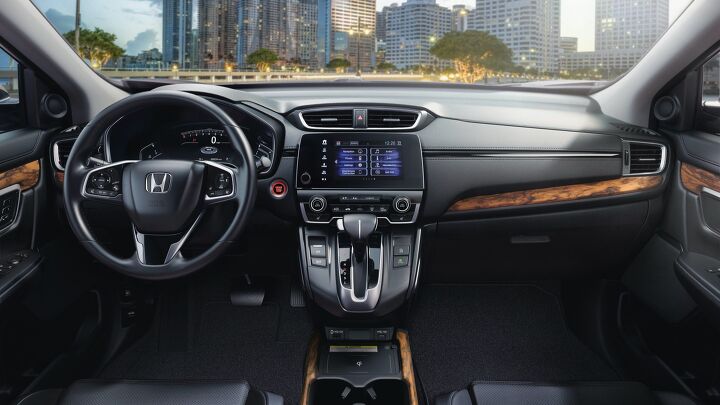






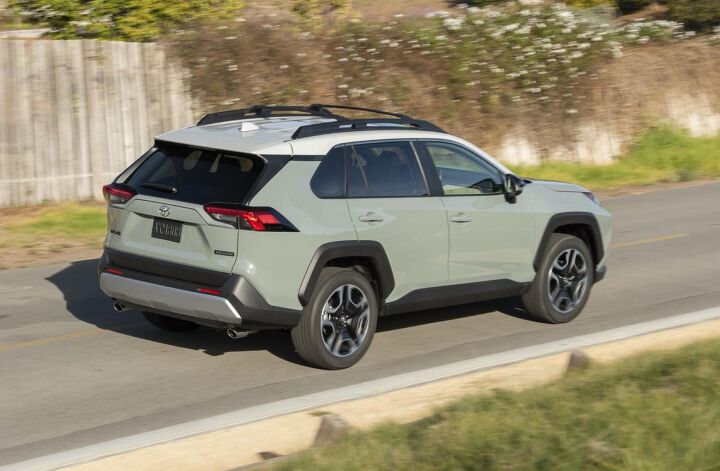



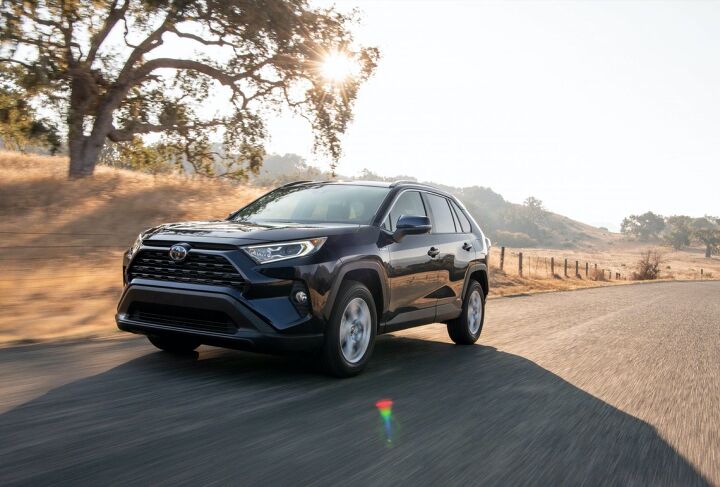














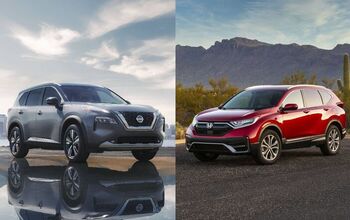

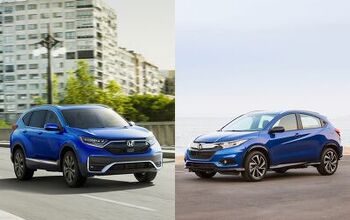










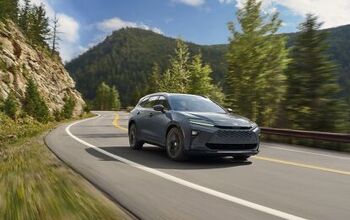
Comments
Join the conversation
I go to many dealers when I purchase a vehicle. I am interested only in the Honda CRV hybrid and the hybrid Toyota RAV4. I have not test driven or seen either one and I only have an estimate of the expected price, base price. I have a 2014 Corolla which is in very good shape to trade-in. I expect some thing far over $10,000.
I am interested in a Honda CRV hybrid- probably a sport touring